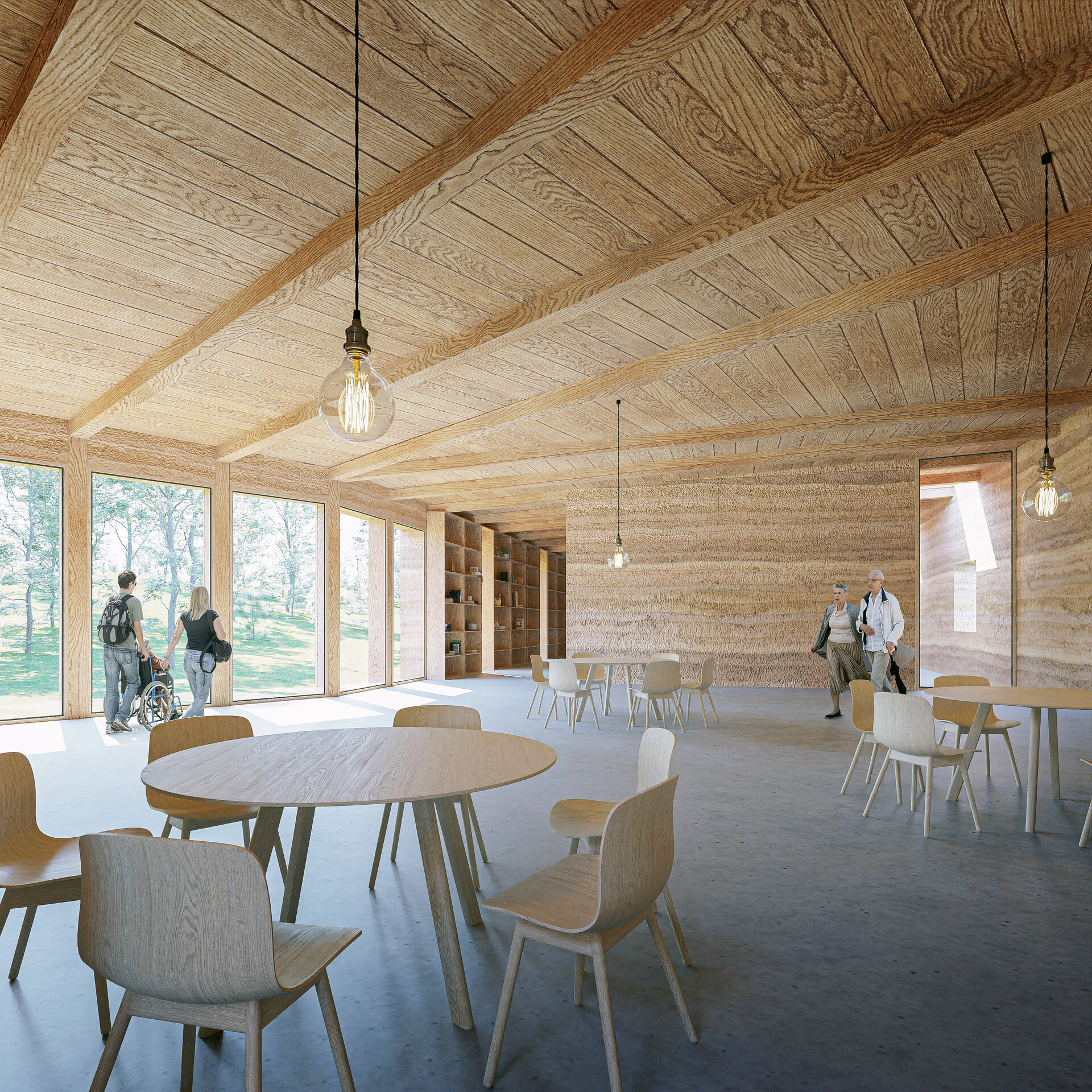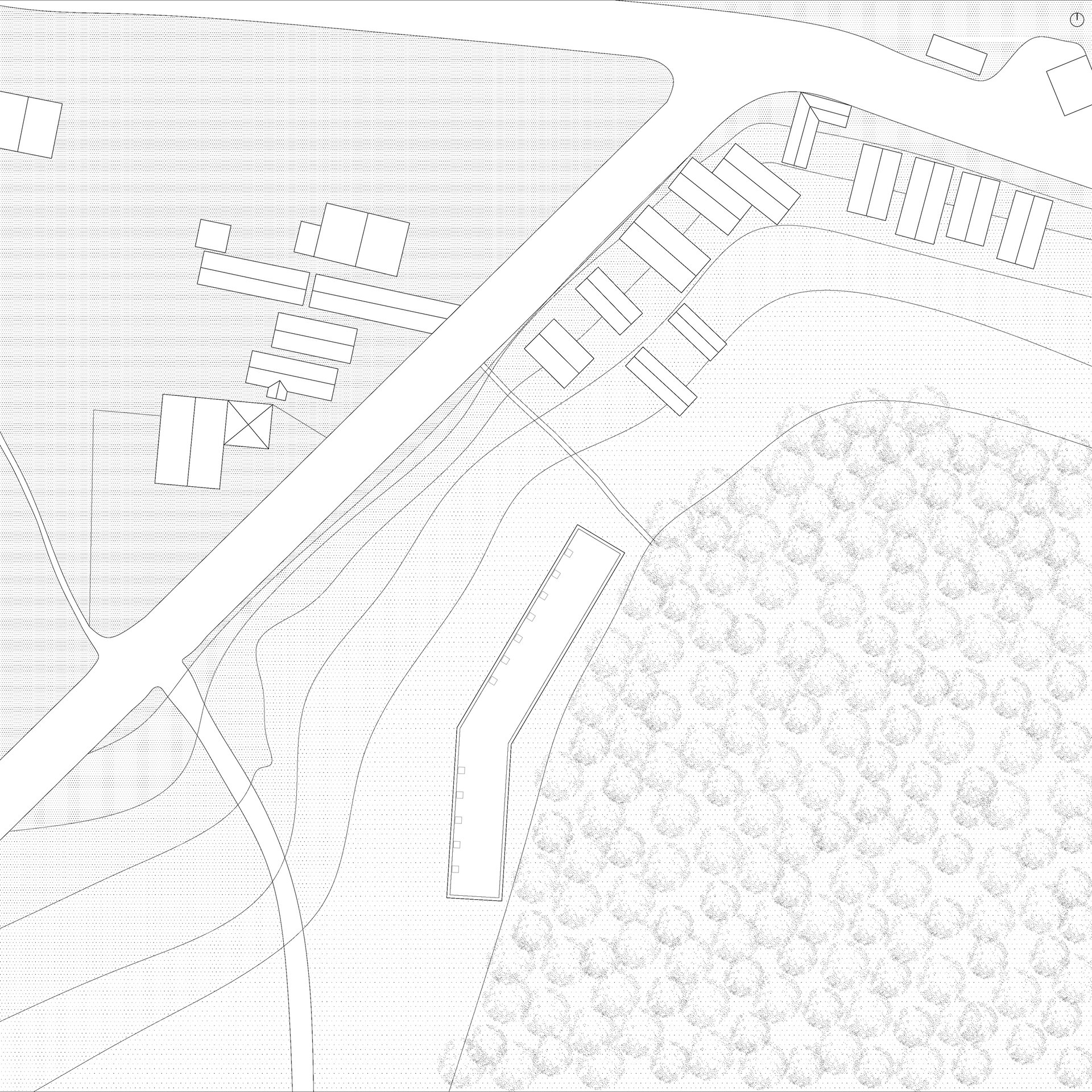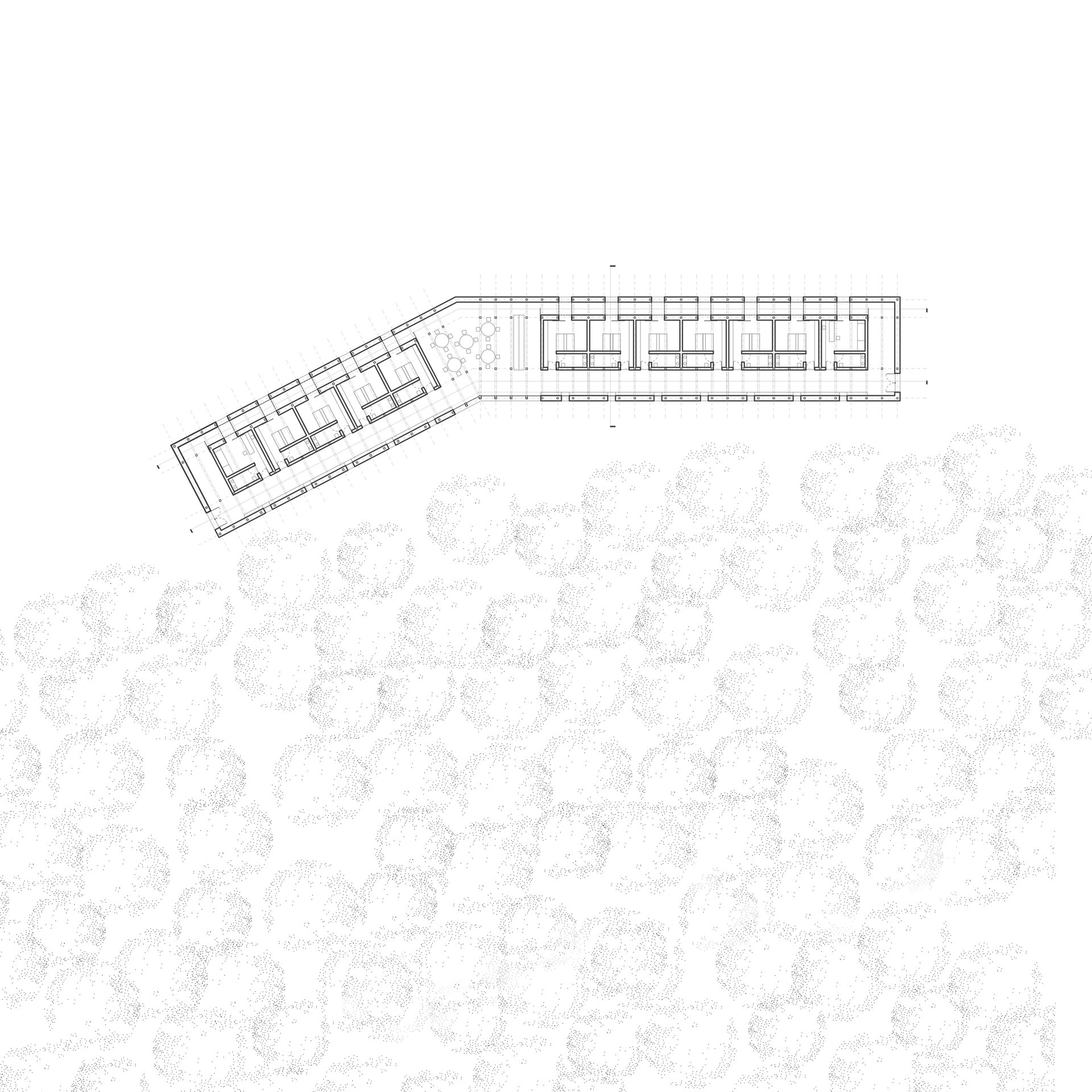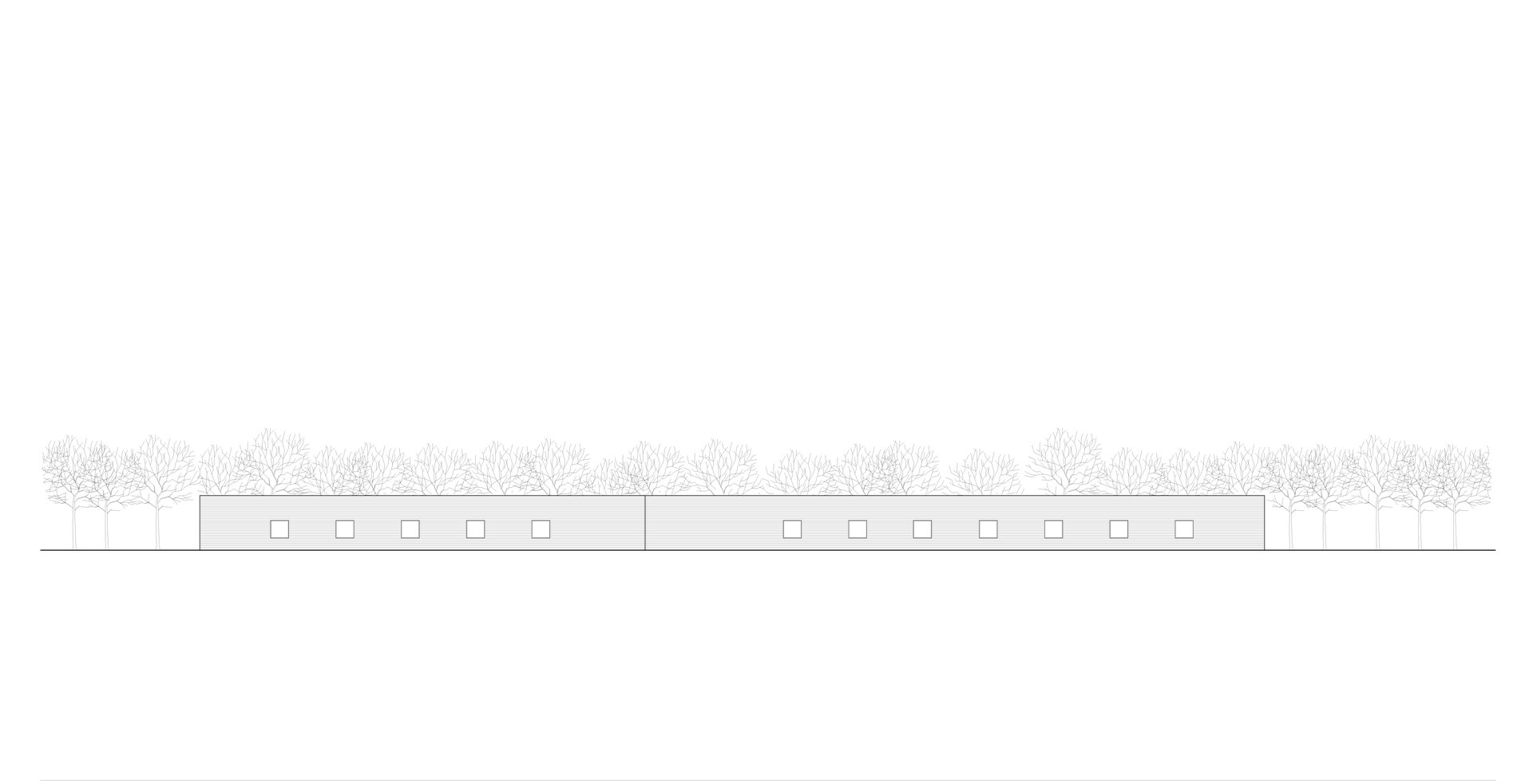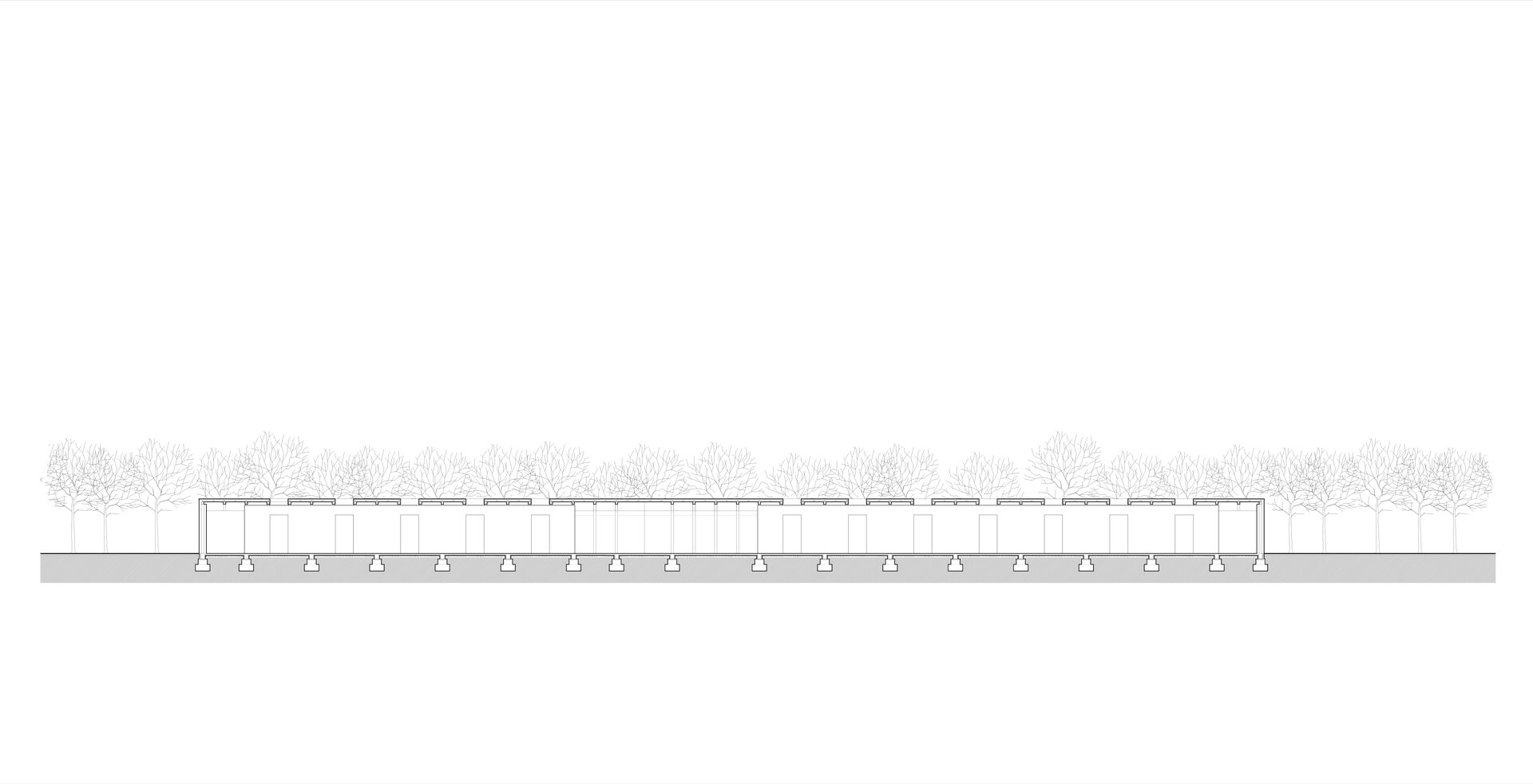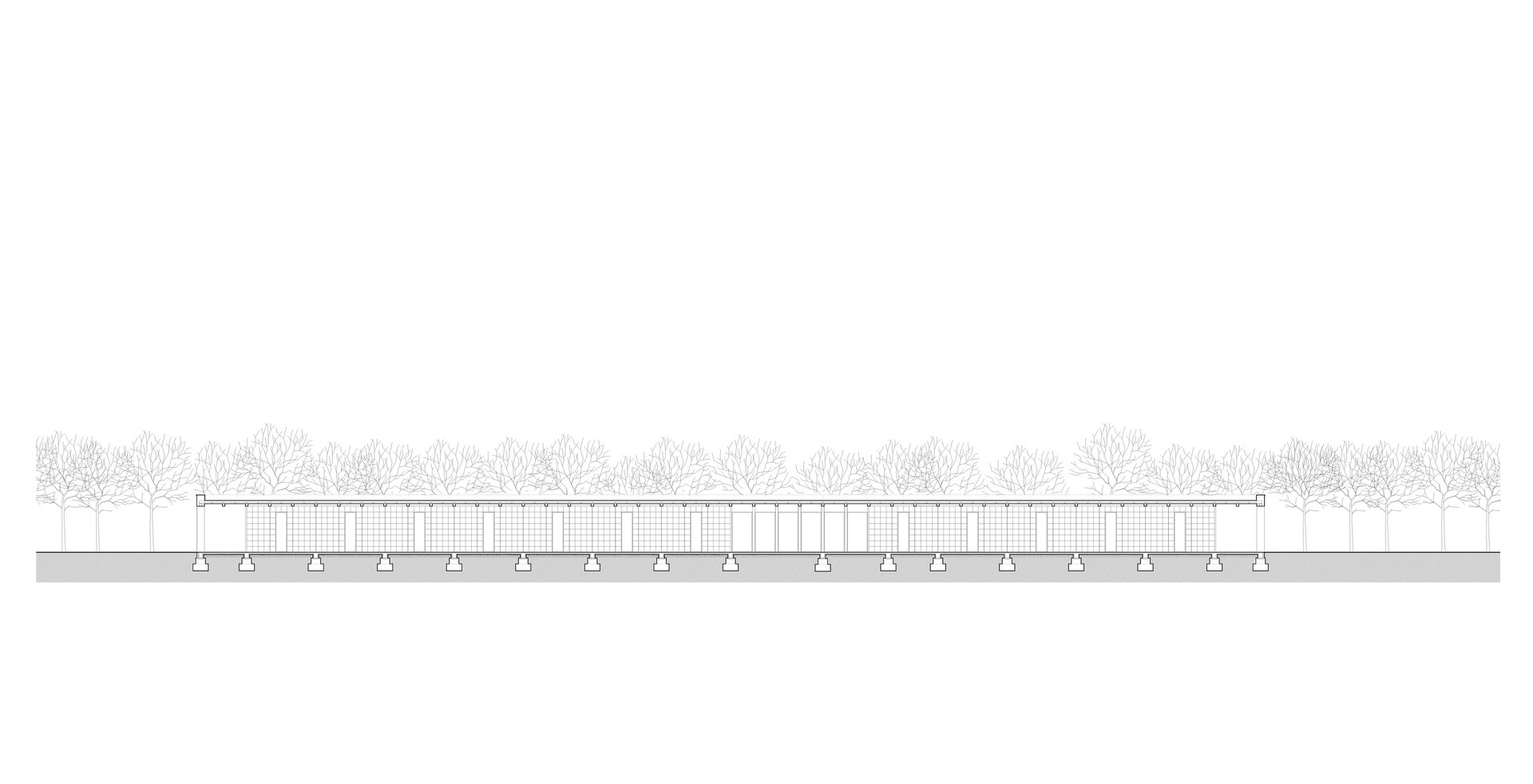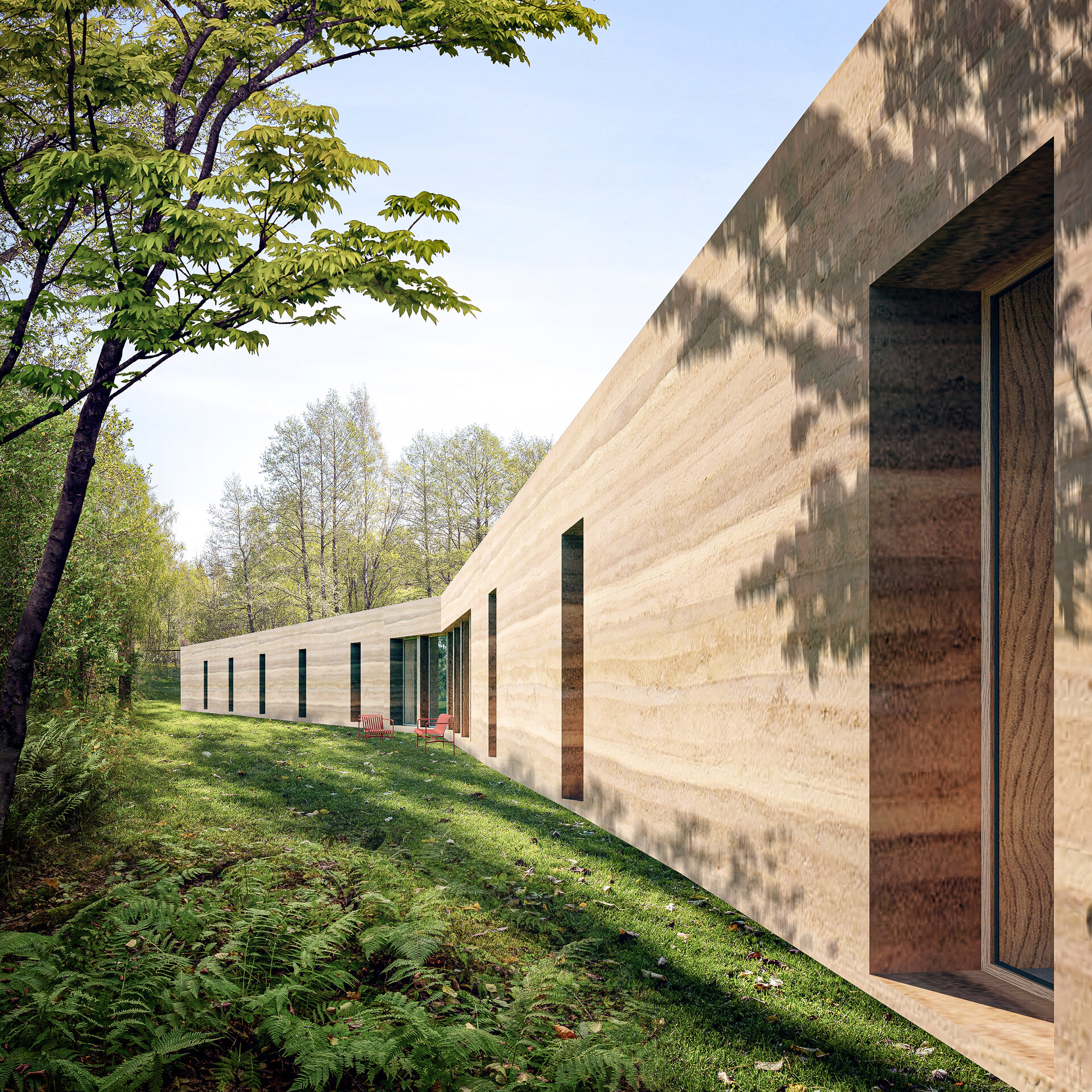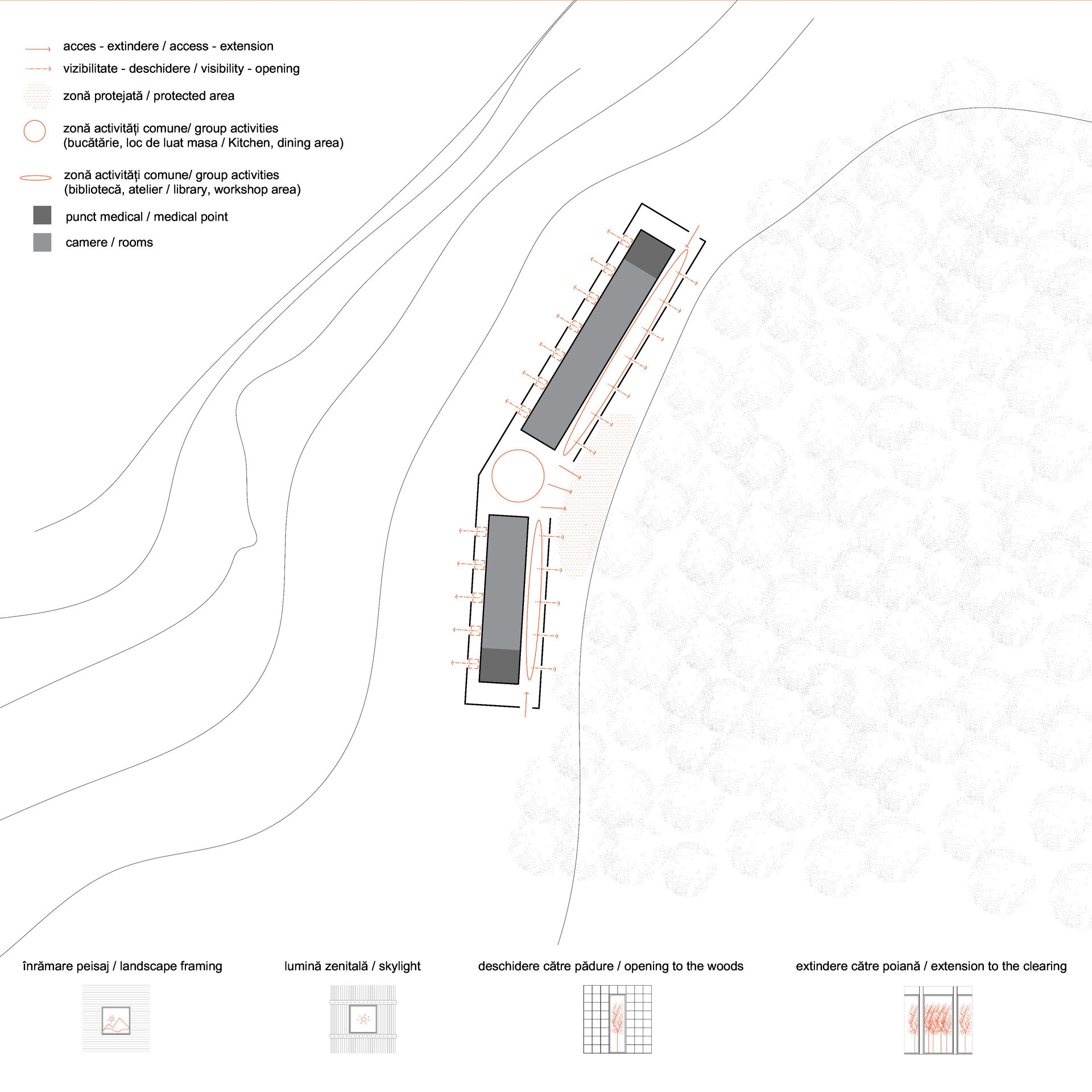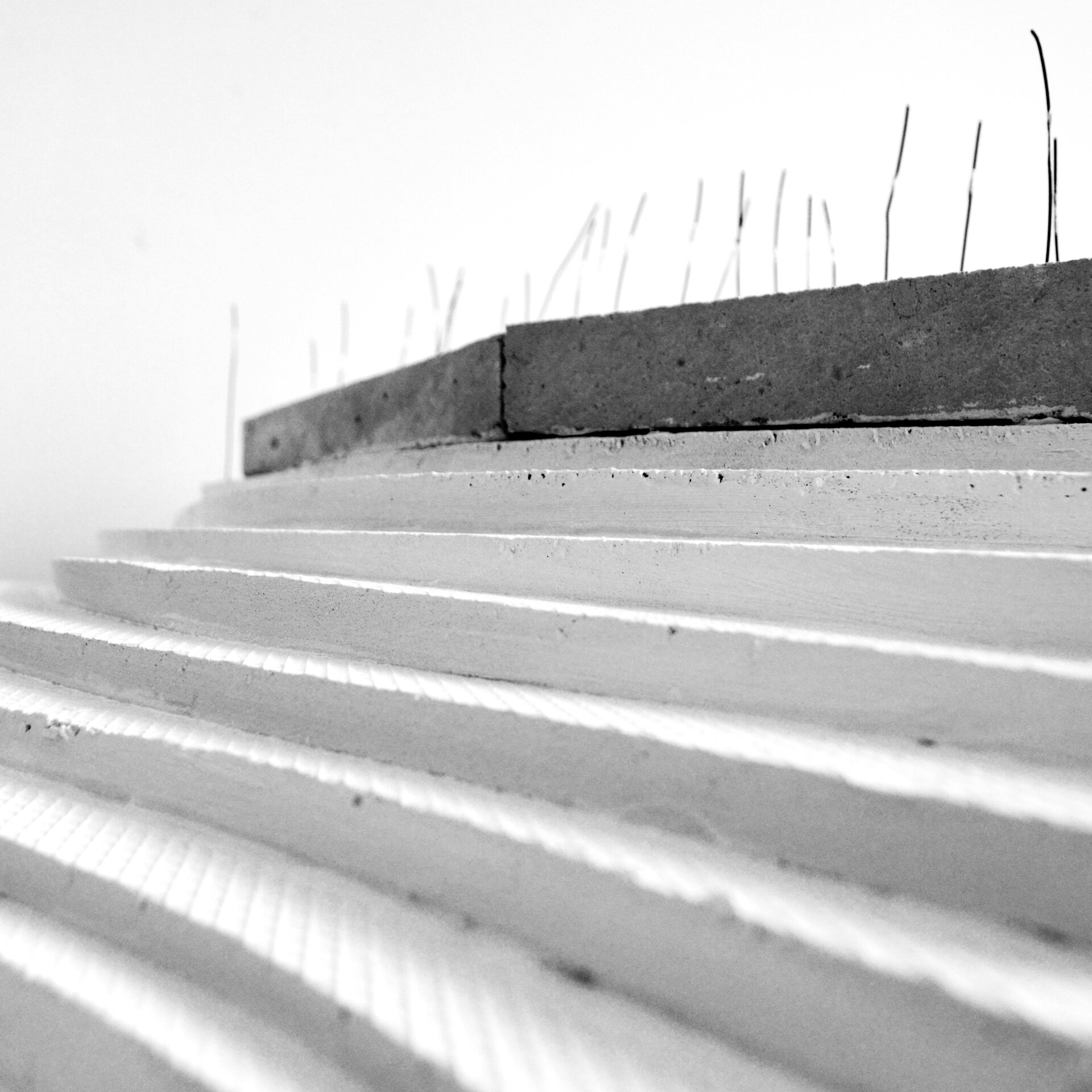
Social center for the elderly
Authors’ Comment
Place and community
The project is part of a series of social initiatives that develop in a rural Roma community, a place with a particular history where we meet the first social experiment of modernity – the Scăieni Falanster (1835-1836), initiated by Teodor Diamant and based on a new perspective on society (utopian socialism).
The project is thought of as a center for the elderly, for people from the community who cannot benefit from help from the family, and it is seen as a structure in which the dormitory program is combined with the afterschool program for Roma children.
Starting from this social, natural and ideological context, we tried to create a space for the Roma community, both at the level of construction and use, from local materials, compacted earth and wood, a space that they can appropriate and that facilitate access to a decent living for the two disadvantaged categories involved.
Project / materiality / landscape
The peculiarity of the project consists in the material and the technique chosen, namely the rammed/compacted earth, a basic element of local origin, put into work by the members of the Roma community as direct users of the project. The volume adapts to the landscape and relates to it in two different ways – through the openings that frame the Prahova Valley hills, and through vertical openings directed towards the forest and meadow that are created between the built mass and the inflections of the vegetation and trees. The two adjacent volumes meet in a common space with a socializing role, a dining area or a library, where the elderly interact with the children, so the space transforms during the day from a nursing home into an afterschool, with a beneficial role for both social categories. The entire common area, which is not limited to the intersection space but expands throughout the circulation space/library, has a punctual visual communication towards the forest, as the most protected area that allows access to children and the elderly who find their role and can contribute to this change of mentality and long-term perspective.
Public Architecture
- Together... Educational centre in Busua
- Outdoor gathering space
- The Rehabilitation of the Chisinau National Philharmonic
- Help Campus
- Lucian Blaga Highschool, Cluj-Napoca
- Connections with Dambovita. Cultural Center and Museum
- Data Center
- Museum of Emotions
- Urban Regeneration of the Cibin Market Area, Sibiu
- In-between echoes of extinction
- Events center
- Urban regeneration of Gara de Nord Square through rehabilitation and functional conversion of Dunărea Hotel
- Social center for the elderly
- Chapel
- Cibin Market
- Rehabilitation, Restoration, Consolidation and Expansion Secondary School in Huși, Vaslui County
- Modernization, rehabilitation and expansion of the Tineretului stadium, Brașov municipality
- Landscape design by the lake - CUG
- Alternative Togetherness
- Offices and Commercial Spaces on Puțul lui Zamfir Street
- School Campus
- Pescăruș Markethall

